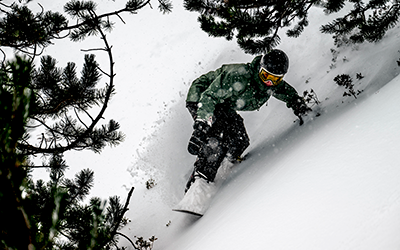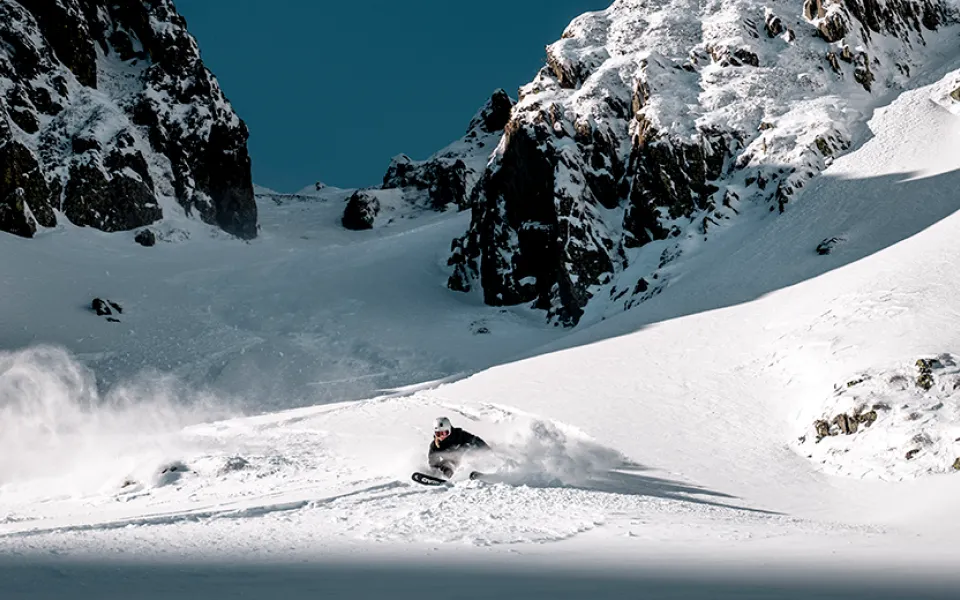 what-is-freeride-skiing
what-is-freeride-skiing
If you’re going on a skiing holiday in Andorra, there are so many different types of skiing that you can try out. One of them is a discipline called freeride skiing, and it’s especially popular at the ski resort of Ordino Arcalís. So, what is freeride skiing? That’s what we’re going to lay out in this blog post, so let’s take a look!
Introduction to freeride skiing
What is freeride skiing? Well, the general definition of freeride skiing is that it’s a discipline of skiing which takes place on natural and ungroomed terrain, usually without any set course or man-made start or end point. In other words, freeride skiing is all about venturing into untouched and ungroomed terrain, where skiers can express their freedom, creativity, energy and adrenaline.
Key characteristics of freeride skiing
Even if you’re already somewhat familiar with winter sports, you might be wondering what is freeride in skiing exactly. Well, there are a few key characteristics that make freeride skiing stand out.
Emphasis on natural features
One of the defining traits of freeride skiing is its interaction with the natural environment. Skiers use natural features to create dynamic lines and stylish runs. Unlike freestyle skiing, which often relies on man-made parks and jumps, freeride celebrates the terrain as it is. Every turn, jump and drop is inspired by the mountain itself, meaning every run can be totally unique.
Off-piste and backcountry terrain
Another trait that is a key to what is freeride skiing is the off-piste and backcountry nature of it. The snow found off-piste is totally different to the perfectly groomed snow of the major slopes at a ski resort, and that’s what freeriders love. It’s worth noting, though, that the freedom of untouched snow also comes with increased responsibility, which is why most beginners will consider freeride skiing lessons to learn the lay of the land as they start out.
Essential skills for freeride skiing
If you do take freeride skiing lessons at Ordino Arcalís, you’ll learn the essential skills for freeride skiing, from how to recognise and understand different types of snow to technical explanations about safe skiing with proper technique.
Succeeding and staying safe in the world of freeride skiing requires a mix of snow and risk assessment, and also technical ability. It’s as much about mountain awareness, route selection and avalanche safety as it is about technique underfoot. Moreover, physical fitness is also a key skill of freeride skiing, as the ungroomed snow can make for a full-on workout, but one that’s truly worth it.
Freeride skiing equipment
The actual freeride skis are quite different to the skis used for other skiing disciplines. They’re usually wider, to provide the extra surface area needed to keep the skier on top of the ungroomed snow, and they’re also built with a greater focus on durability and strength, often through reinforced edges, thicker bases and sturdy cores.
As well as all the usual ski clothing and gear needed for a day on the snow, there are some extra pieces of equipment worth taking if you’re going to be doing freeride skiing. This can include items such as first aid kits, avalanche transceivers, probes, shovels, helmets, back protectors and layered technical clothing. If you’re going to be freeride skiing in a remote area, it’s essential to check the regional guidelines and to make sure you’re carrying all the necessary safety equipment.
Popular freeride skiing destination: Ordino Arcalís
Over the years, Ordino Arcalís in Andorra has earned a reputation as being a freeride paradise. This resort in the Pyrenees boasts abundant snowfall, north-facing slopes and challenging terrain that’s perfect for freeride exploration. It’s no surprise that major freeride events visit Ordino Arcalís, including the first ever FIS Freeride World Championships, scheduled for February of 2026.
